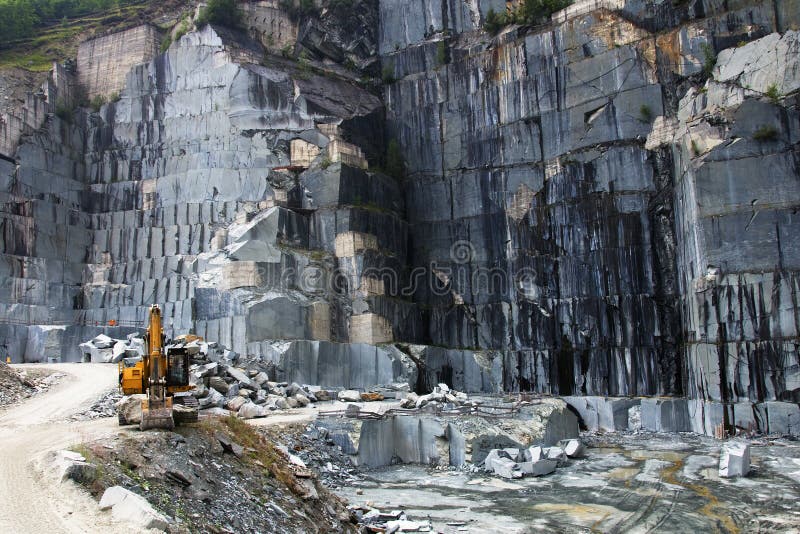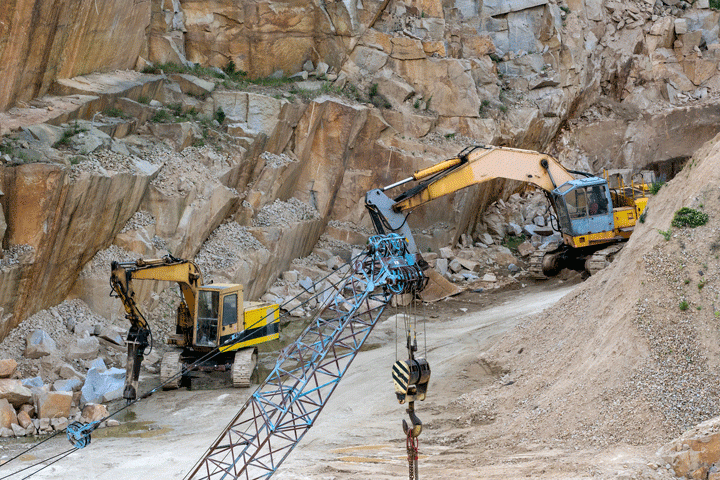Revealing the Mysteries of Granite Quarrying: Where Toughness and Elegance Meet
The world of granite quarrying is a world where the raw toughness of nature merges with human artistry to produce structures that stand the examination of time with an air of style. From the depths of quarries to the precise polishing in workshops, the procedure of changing granite into architectural marvels is a complicated dance of custom and technology. As we peer right into the midsts of this old craft, we start to uncover the covert complexities that shape the extremely significance of our developed atmosphere.
The Beginnings of Granite Quarrying
In the record of building background, the beginnings of granite quarrying are shrouded in a tapestry of ancient craftsmanship and geological marvels. Dating back to ancient Egypt and Mesopotamia, the extraction of granite from quarries marked the beginning of a journey that would eventually lead to the creation of some of the globe's most legendary frameworks.
Granite quarrying's origins can be mapped to the proficient craftsmens that acknowledged the stone's resilience and aesthetic appeal. Through a mix of primitive devices and sheer decision, these early quarry employees uncovered granite blocks that would certainly end up being the building blocks of worlds.
As civilizations evolved, so did the strategies of quarrying granite. The Romans, renowned for their design prowess, developed innovative approaches for drawing out granite to construct monoliths, holy places, and roads that stood the test of time.
The heritage of these ancient quarrying practices proceeds to shape modern style, with granite continuing to be a sign of strength and style in building projects around the globe. (granite quarries in south africa)
Tools of the Quarrying Trade
The evolution of granite quarrying methods from ancient civilizations to modern-day times highlights the important role played by the devices of the quarrying trade in forming the market's practices. In old times, quarrying tools were primary, commonly consisting of knives, hammers, and wedges made from materials like bronze or iron. These devices needed substantial manpower and time to remove granite blocks from quarries.

Furthermore, the introduction of pneumatic tools and high-powered equipment has actually dramatically lowered the physical labor called for in quarrying procedures, improving worker safety and productivity. As the quarrying industry proceeds to introduce, the tools of the trade remain at the center of driving progression and forming the future of granite extraction.
Extracting Blocks of Granite
Utilizing accuracy machinery and advanced techniques, the removal of granite blocks from quarries has come to be an innovative process in the modern quarrying sector. The first step involves recognizing the place and check here size of the granite down payment to figure out the most reliable removal method. As soon as an appropriate site is picked, the extraction process starts with the drilling of openings for the placement of explosives. Regulated blasting strategies are after that employed to damage apart the granite into convenient sections.

Polishing and Ending Up Methods
To achieve a remarkable surface on granite blocks, skilled craftsmens employ a collection of meticulous sprucing up and finishing strategies. After the preliminary extraction and forming procedures, the granite obstructs go through a detailed sprucing up stage to boost official source their natural appeal and sturdiness. One usual technique used in polishing granite is diamond abrasion, where commercial rubies are utilized to grind and brighten the stone to a smooth coating. This process not only creates a lustrous surface but likewise guarantees harmony in shade and texture across the granite block.
In addition to polishing, ending up methods are used to additional fine-tune the granite's appearance. These methods may include flaming, honing, or brushing, each offering special appearances and coatings to suit different aesthetic preferences. Flaming, for instance, includes subjecting the granite surface area to heats to develop a rough, distinctive finish, ideal for outdoor applications where slip-resistance is vital. Refining, on the various other hand, gives a matte coating that is smooth to the touch, excellent for interior kitchen counters and floor covering. By meticulously picking and using these brightening and ending up strategies, craftsmens can change raw granite blocks into beautiful pieces that showcase both strength and elegance.

Ecological Impact and Sustainability
With the expanding focus on environmental awareness in the industry, granite quarrying methods are significantly inspected for their effect on natural deposits and lasting sustainability. Quarrying for granite can have significant environmental effects. The extraction process commonly involves using hefty equipment, explosives, and big quantities of water, leading to habitat damage, dirt disintegration, and water pollution. Furthermore, the transport of granite from quarries to refining centers creates carbon emissions, even more adding to environmental deterioration. granite quarries in south africa.
To reduce these impacts and make certain sustainability in granite quarrying, industry stakeholders are embracing various procedures. Implementing sophisticated modern technologies to reduce energy consumption and water usage, recovering quarried land for eco-friendly restoration, and promoting responsible sourcing practices are some approaches being used. Certifications such as the Forest Stewardship Council (FSC) and the Leadership in Energy and Environmental Layout (LEED) aid customers determine ecologically friendly granite products.
Final Thought
Finally, granite quarrying is a procedure that needs specialized tools and strategies to extract blocks of granite and brighten them to a high degree of coating. While the ecological influence of quarrying can be significant, efforts are being made to improve sustainability methods in the market. Generally, granite quarrying is a fragile balance between taking advantage of the toughness see this and style of this all-natural stone while lessening its effect on the atmosphere.